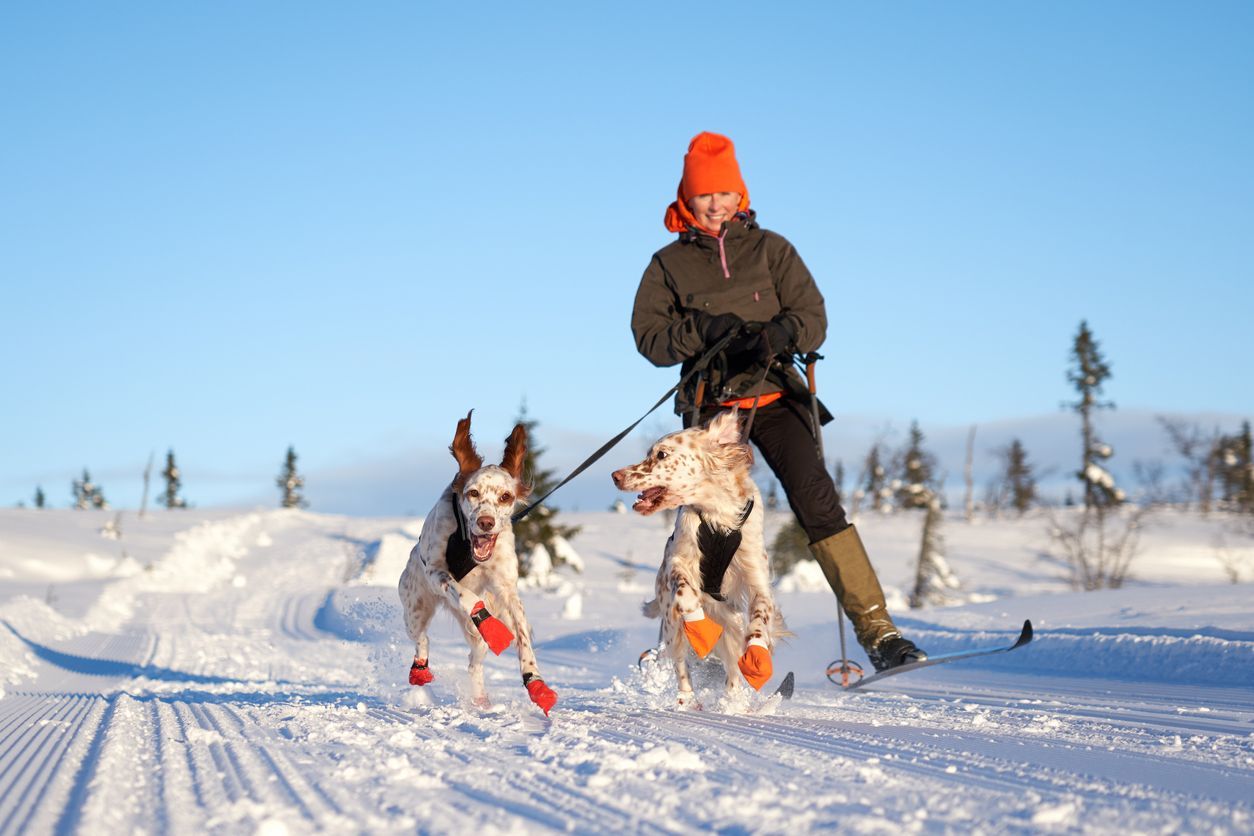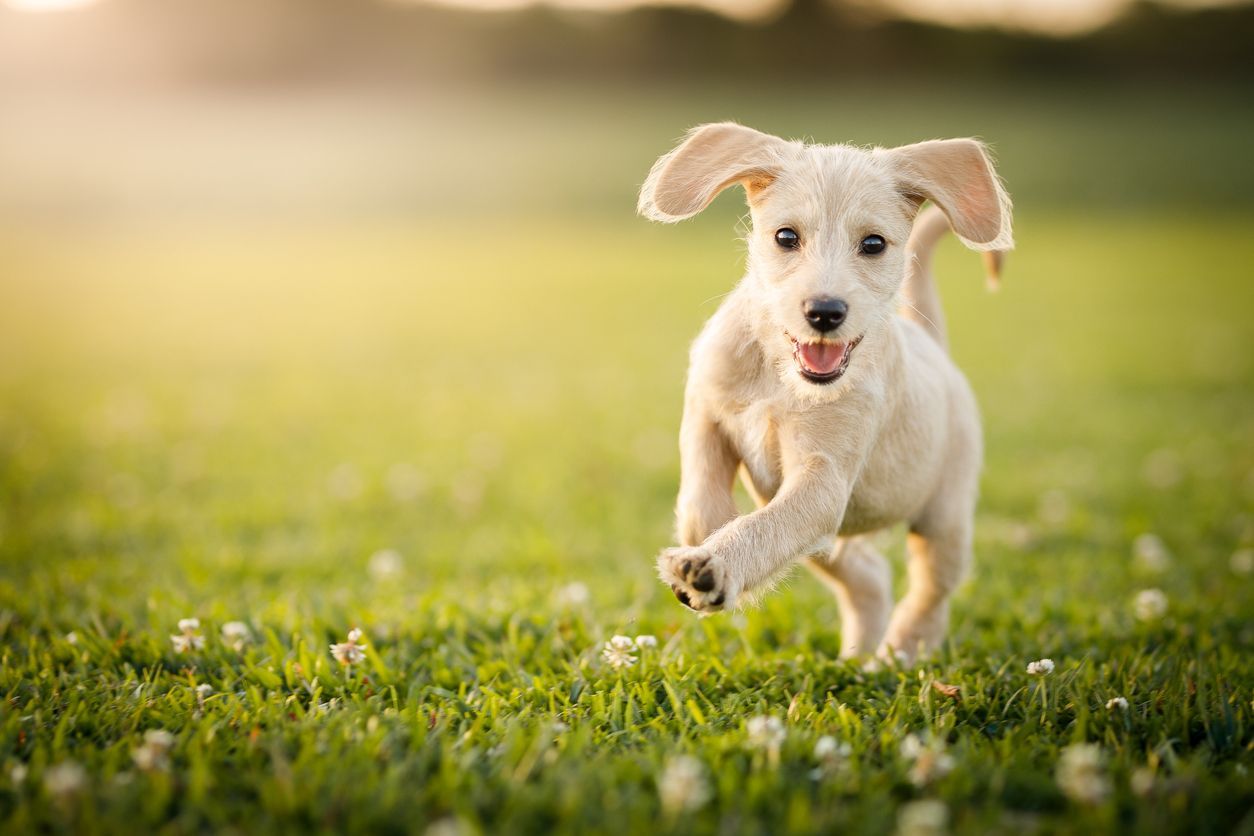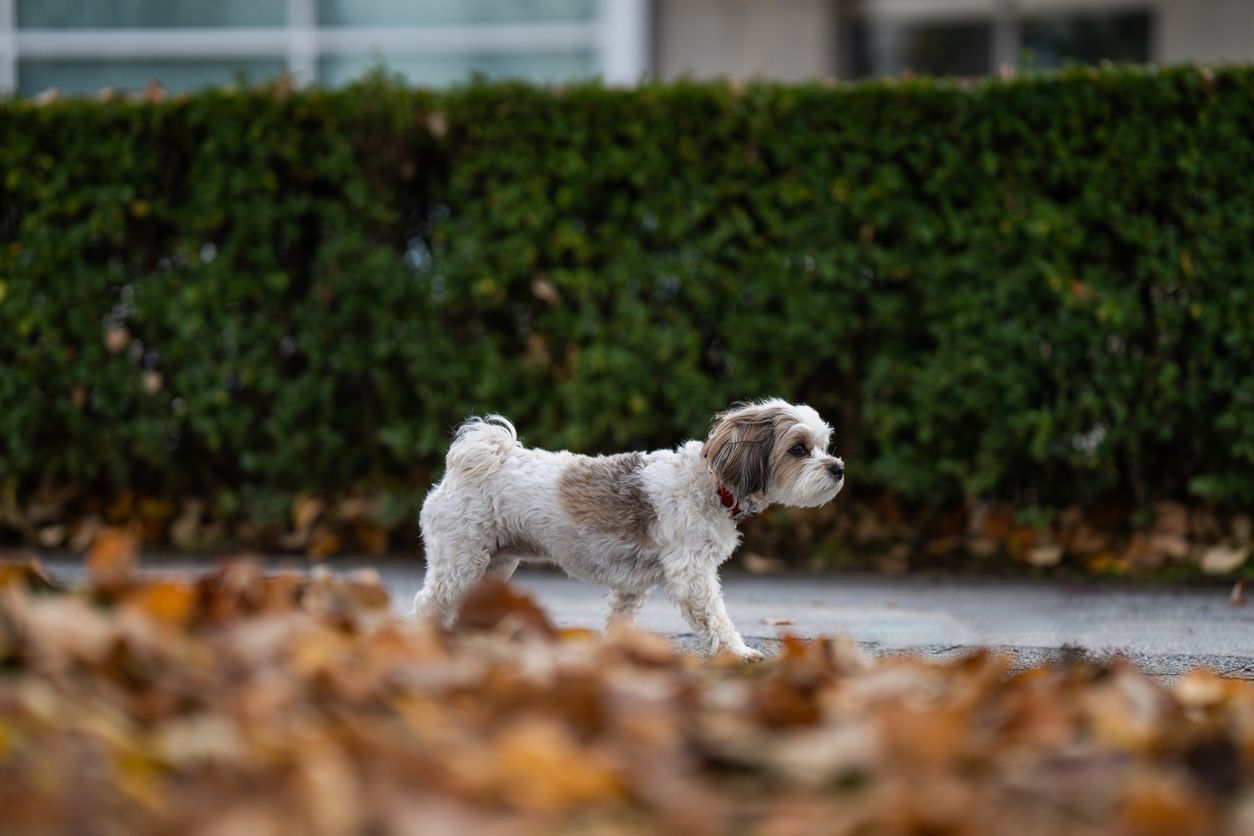Keep your dog safe in the cold and wet Winter season

While most dogs adapt well to all seasons, there are some safety hazards you should be aware of in the cold and wet winter months. By making a few simple adjustments with these winter care tips, you can keep your dog safe, warm, and happy in cold weather.
What are Winter weather hazards for pets?
The cold winter months present special hazards for pets that can be avoided if you take a few precautions. Some winter weather hazards include:
- Hypothermia
- Frostbite
- Paw pad burns or skin irritation
- Antifreeze poisoning
Hypothermia
Hypothermia can occur when dogs are exposed to the cold for extended periods. Newborn puppies, older dogs, or dogs with certain health conditions such as congestive heart failure and chronic kidney disease are more at risk of developing hypothermia. Having wet fur in a cold or windy environment can also cause your dog to rapidly lose body heat.
Most dogs are more tolerant of the cold than we are, so if your dog appears comfortable and happy outdoors with you, you have no reason to worry. Hypothermia is unlikely to occur unless a dog is forced to stay outside long after they’ve made it clear they’re not okay. You can avoid hypothermia by heading inside as soon as you observe these signs of discomfort in your dog:
- Dancing around on alternating paws
- Being reluctant to run or play
- Shivering
- Attempting to go back inside
Symptoms of hypothermia include:
- Uncontrollable shivering early on
- No shivering at all later
- Reluctance to move, staying curled up
- Being stiff or uncoordinated
- Appearing sleepy (lethargy)
- Cold extremities
- Lilac or pale gums
Different dogs have different tolerance to cold temperatures. Younger, smaller dogs and those with sparse hair coats will have more trouble, whereas larger dogs with a thick coat can better tolerate colder temperatures. Senior dogs or dogs living with a chronic illness are also at higher risk for suffering in the cold. There is no specific outdoor temperature that indicates your dog will develop hypothermia. Pay attention to your dog’s behavior and be more cautious as cold weather temperatures dip below 45 degrees Fahrenheit. Also keep in mind that wet and windy conditions hasten heat loss.
Frostbite
Dogs can get frostbite from cold exposure in severe winter weather just like humans can. Signs of frostbite include:
- Pale, gray, or blue skin
- Swelling
- Blisters
- Pain
- Blackened skin
- Skin that hard or stiff
Frostbite in dogs most often occurs first on the ears, tail, or paws. Keeping your dog’s core temperature warm can help but if it is cold enough for you to get frostbite without gloves, mittens, or earmuffs on, your dog may also be at risk, especially if they don’t have a thick coat. Keep walks in deep snow or frigid temperatures short and plan to do other activities indoors to provide an outlet for your dog’s energy.
Paw pad burns or skin irritation
In the winter, dogs are prone to paw pad burns and skin irritation from ice-melting chemicals or ice building up between their toes. Signs of skin irritation include excessive licking at the feet or toes, redness, and sores. Keep the long fur on your dog's feet trimmed to avoid ice buildup. Avoid walking where ice-melting chemicals are used, and wash your dog's paws when they come in from a walk to remove any residue.If your dog’s skin appears dry, damaged, or inflamed, seek veterinary attention.
Antifreeze poisoning
Ethylene glycol is highly toxic to dogs all year long, but we tend to think about potential exposures more often in the winter since it is the main ingredient in antifreeze. It doesn’t take much ethylene glycol to cause lethal poisoning in both dogs and cats. Use pet-safe products when possible or keep your dog away from any substance that may be a potential danger. For additional risks based on your dog's age and health condition, contact a vet who can help you come up with a plan to combat cold weather dangers.
What can I do to protect my outdoor dog in the winter?
If your dog has a mostly outdoor lifestyle and its breeding and age are well suited to winter conditions, you should still take care to make plans for severe temperatures.Even the hardiest dogs can be affected by extreme weather. During the winter months, consider:
- Weather-proofing outdoor accommodations. Make sure your dog has access to a shelter that is dry and out of the wind. Cover cold tile with something warm and make sure any heating elements are not a potential hazard.
- Check that your dog has access to clean, unfrozen drinking water. If your dog spends most of its day outdoors in the winter, you may need to refill the water supply throughout the day.
- If your dog is sick or has an ongoing health condition, it may not be ideal for them to be exposed to the cold. Keep up with regular vet appointments and let your vet know if your dog is primarily an outdoor dog.
- All dogs may need to be brought indoors at some point in extreme temperatures. Listen for severe weather advisories and have a plan ready to accommodate your dog inside if needed.
Should I purchase a winter wardrobe for my dog?
Many dog owners wonder if their dog’s natural fur coat is warm enough and if they should purchase a winter wardrobe for their pup. Most dogs can manage without extra protection in winter. Particularly vulnerable dogs, such as smaller breeds and dogs with little hair, may benefit from clothing, but it will only provide a bit of protection. While rain jackets and other winter clothing can be useful, it is better to gradually get your dog acclimated to the cold rather than rely on clothing for warmth. Most healthy dogs acclimate well to normal seasonal fluctuations. If it’s too cold for your dog to be outside, a sweater won’t make that much of a difference.
Many dogs have natural coats that work to help keep them warm. Continue grooming your dog in the winter as normal. There are benefits to grooming your dog year-round, although not all dogs need the same amount of grooming. A dog’s coat should be healthy and clean in order to function properly as an insulating layer. During the winter, pay special attention to:
- Trimming long fur around your dog's paws that may accumulate ice and debris
- Washing chemicals/salt from your dog's paws after a walk
- Monitoring for dry skin and cracked paws
- Drying your dog fully after a bath before exposing them to the cold temperatures
Some working dogs who must be outside in inclement weather may benefit from protective clothing like boots or goggles.All dogs may benefit from harnesses, leashes, or clothing that have fluorescent or LED material to make them more visible to motorists during the long, dark winter night. Dogs should not be left in clothing or safety equipment unsupervised. Clothing can often be a risk for dogs as it can potentially choke or entangle them.
So how can you keep your dog safe during cold weather conditions?
Following these winter care tips will help you keep your dog safe during winter temperature extremes:
- Winterize your dog’s housing to withstand cold temperatures and prevent exposure to wind and moisture.
- Bring outdoor dogs inside when severe cold alerts are issued.
- Be aware of winter hazards that may be unique to your area, like frozen ponds and deep snow.
- Avoid hypothermia, frostbite, and other conditions related to cold temperatures and commonly used winter chemicals.
- Download the Vetster app or bookmark the website so that you are prepared to book a vet appointment if your dog shows symptoms of illness or if you would like to talk to a vet about caring for a pre-existing condition.
FAQ - Keeping your dog safe in the cold winter months
How cold is too cold for my dog to go on their regular walk?
There is no single temperature that is too cold for all dogs to keep up with their regular walk. Every dog is different and other factors such as wind chill, sunlight, and precipitation may affect how cold it feels to your dog. Watch your dog for signs of discomfort. If it's cold enough for you to get frostbite, it's possible your dog may as well. If it is uncomfortably cold for you outside, stay on the safe side and take your dog on a shorter walk. Try supplementing indoor activity when possible to make up for the decrease in outdoor exercise time.
Can dogs get Seasonal Affective Disorder?
No. Dogs do not experience Seasonal Affective Disorder (SAD). Most dogs adapt to the change in seasons relatively well. It’s easy for pet parents worried about or even suffering from SAD to interpret their dog’s behavior as corresponding to SAD, but it’s important to pursue symptoms like lethargy, lack of energy, loss of appetite, and decreased interest in engaging in activities with a veterinary visit. Our dogs are empathetic creatures, but it’s much more likely that symptoms like these are the result of some type of medical disorder.
Do I need to feed my dog more in the winter?
It is actually a myth that dogs as a whole need to eat more in the winter. In some specific cases, a dog may need additional calories, such as a working dog who lives outside. Dogs generally need less food in the winter or any other time they are exercising less. If your dog is experiencing a change in appetite during the winter, see a vet to determine the underlying cause.




